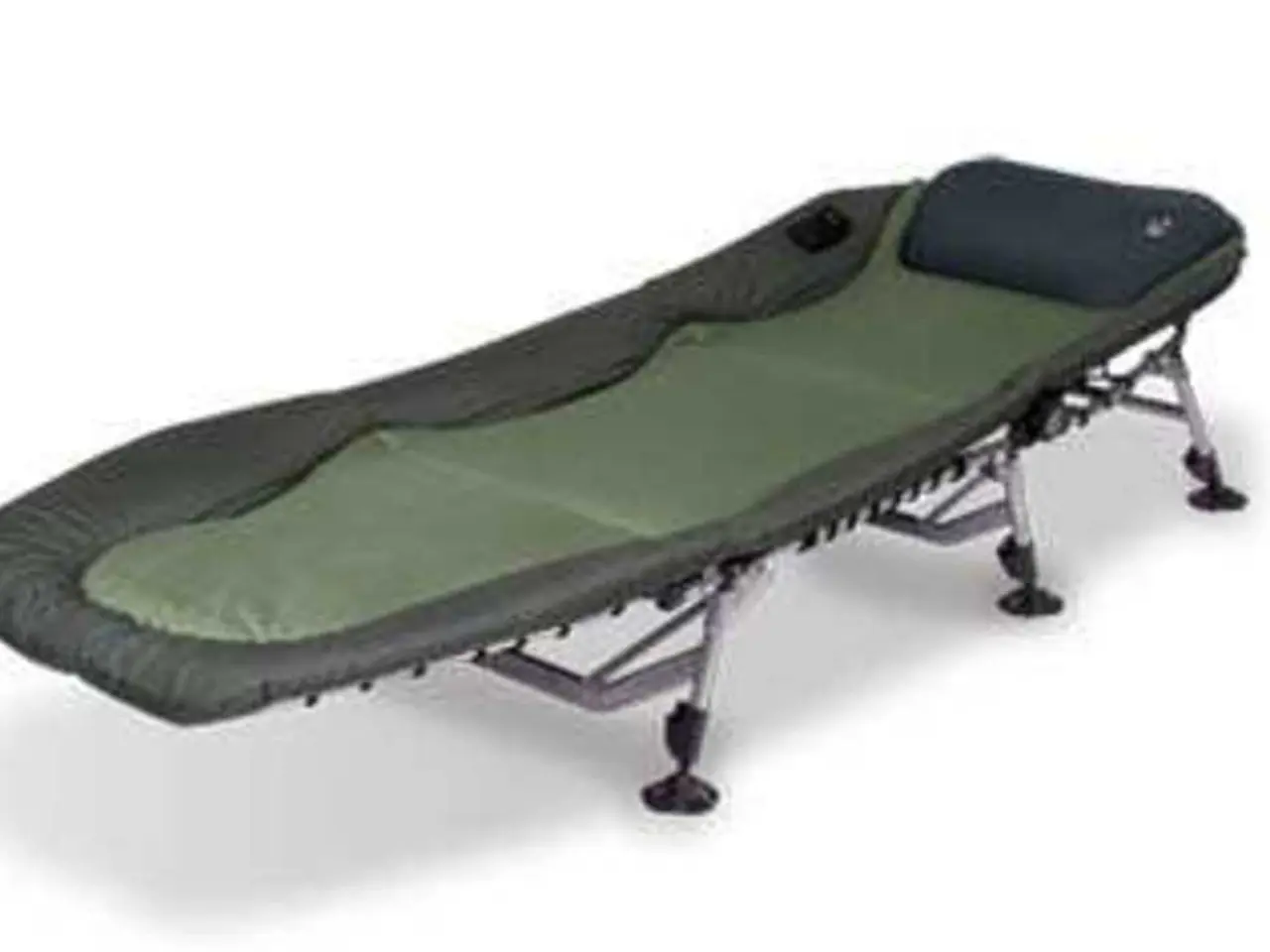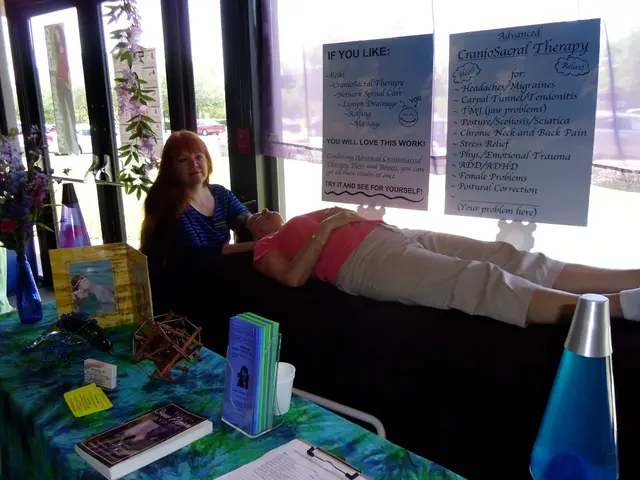Techniques for Alleviating Soreness and Discomfort in Knees
Managing knee pain doesn't have to be a torturous journey. Whether you've got that pain from an injury, arthritis, or another hidden issue, pinpointing solutions can help you live a more enjoyable life. Let's delve into practical tips and strategies to help you deal with your knee issues and get back to being active.
Unveiling Knee Pain Mysteries
Before we dive into the solutions, let's take a closer look at the possible causes of knee pain.
Knee pain may be influenced by a handful of factors, such as:
- Trauma or injury
- Arthritis
- Tendonitis
- Bursitis
- Meniscus tears
- Repetitive strain
Identifying the core reason behind your knee pain is crucial, as it helps you craft a personalized strategy to tackle the issue head-on.
1. Rest Up and Chill Out
When grappling with knee pain, don't underestimate the power of some good old TLC. Give your knee a break, and use ice to decrease inflammation. Recovery time allows injured or strained tissues to heal, while icing helps alleviate pain and swelling. Just make sure to use a cloth or towel as a buffer between the ice and your skin.
2. Get Your Move On
While rest is necessary, don't forget the importance of exercise. Low-impact activities like swimming, walking, and cycling help improve knee stability and reduce pain. However, it's vital to consult your healthcare provider or a physical therapist to determine the appropriate exercises for your specific situation.
Physical therapy can also be an excellent option. A PT can tailor a treatment plan with various exercises and techniques to aid in pain relief, boost flexibility, and restore knee function.
3. Take Some Pills
In certain instances, over-the-counter pain meds can offer temporary respite from knee pain. Nonsteroidal anti-inflammatory drugs (NSAIDs) are commonly used for inflammation reduction and pain relief. Just make sure to follow the recommended dosage and consult a healthcare professional if you have any underlying medical conditions or are taking other medications.
4. Keep the Scale in Check
Extra pounds can put added strain on your knee joints, aggravating the pain. If you're overweight, shedding a few pounds can significantly decrease the stress on your knees and alleviate your pain. Opt for a nutritious, well-rounded diet and regular exercise for gradual, sustainable weight loss.
5. Gear Up
Using assistive devices can help alleviate knee pain and enhance mobility. Knee braces or sleeves provide support and stability to the knee joint, lessening pain during physical activities. Canes or crutches can also offer additional support and minimize the weight on your knee during walking.
6. Experiment with Alternatives
Many people find comfort by exploring alternative therapies. These treatments may include acupuncture, massage therapy, chiropractic care, or naturopathy. While the effectiveness of these treatments can vary from person to person, they can be worth investigating as part of your pain management plan.
7. Operating Room Solutions (When Necessary)
When conservative approaches don't provide adequate relief, surgical interventions may be necessary. Procedures such as arthroscopy, knee replacement, or ligament repairs can be considered to address underlying knee issues that are causing pain. Consult with an orthopedic specialist to determine if surgery is the right choice for you.
8. Stretch It Out
Stretching and flexibility exercises can help release muscle tension around the knee joint and enhance the knee's range of motion. Incorporate gentle stretches into your daily routine, focusing on the quadriceps, hamstrings, and calf muscles. Yoga and Pilates can also be advantageous for improving flexibility and strengthening the muscles that support the knee.
9. Ergonomic Modifications
Adjusting your surroundings to support your knee health can make a significant difference in managing knee pain. Maintain good posture while sitting, use supportive chairs, and position your workstation at a comfortable height. Avoid extended kneeling or squatting, and use knee pads when necessary.
10. Get Professional Guidance
If your knee pain persists or intensifies, seeking professional medical help is essential. A healthcare professional can accurately diagnose the underlying cause of your knee pain and recommend suitable treatment options. They may refer you to an orthopedic specialist or a physical therapist for further evaluation and management.
Remember, knee pain is unique for everyone, and what works for one person might not work for the next. So, pay attention to your body, be patient, and work closely with healthcare professionals to pinpoint the most effective management plan for your specific situation.
If you're looking for more information on knee pain treatment and management, feel free to visit [our clinic]. They offer a wholesome approach to knee pain treatment, including conservative therapies and advanced interventions.
Additional Information:
A strategic approach to managing knee pain predominantly focuses on non-surgical interventions, addressing issues such as pain, inflammation, strength, and mobility. This encompasses:
- Strengthening exercises that focus on muscles around the knee, helping to stabilize the joint and alleviate stress.
- Flexibility exercises that promote knee mobility, reduce stiffness, and improve range of motion.
- Adopting low-impact activities like swimming and cycling to maintain knee health without exacerbating pain.
- Supportive measures like knee braces and compression techniques to manage swelling and inflammation.
- Physical therapy and targeted exercises to tailor a treatment plan specific to your needs.
- Alternative therapies, such as acupuncture and massage therapy, to provide additional relief.
- Weight management and lifestyle adjustments aimed at reducing mechanical stress on the knee joint to alleviate pain symptoms.
These comprehensive, non-surgical methods target the root causes of knee pain, offering effective relief for conditions like injury, arthritis, tendonitis, bursitis, meniscus tears, and overuse injuries.
- In some cases, nutrition plays a significant role in managing knee pain by maintaining a healthy weight, as extra pounds can put added strain on the knee joint.
- In addition to traditional medical treatments and exercises, therapies like acupuncture, massage therapy, and chiropractic care can be explored as alternatives to alleviate knee pain and improve overall health and wellness.
- A holistic approach to managing knee pain includes incorporating fitness and exercise, such as low-impact activities like yoga, Pilates, and swimming, into one's routine to maintain knee health, reduce pain, and enhance flexibility.








